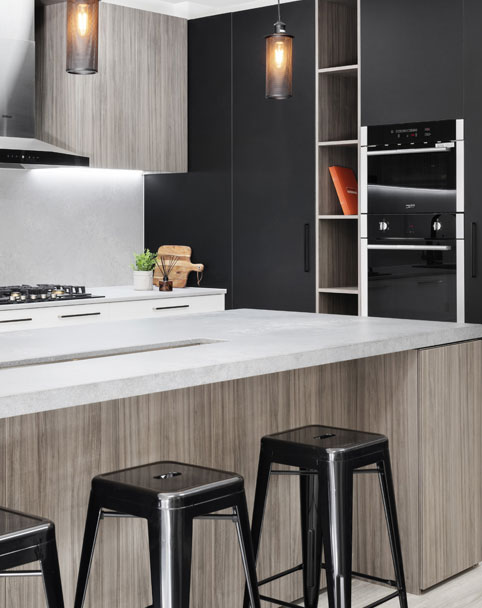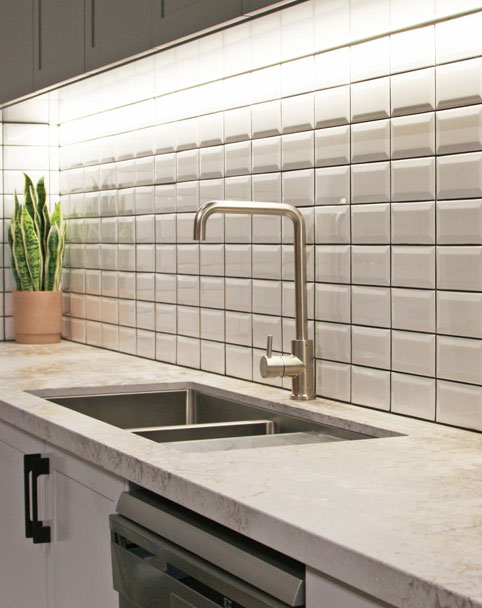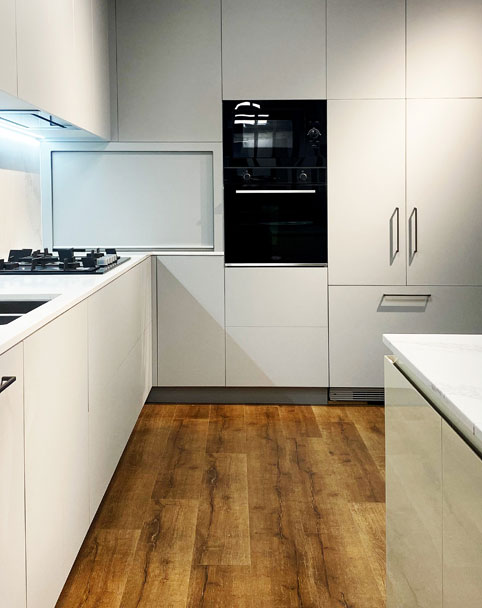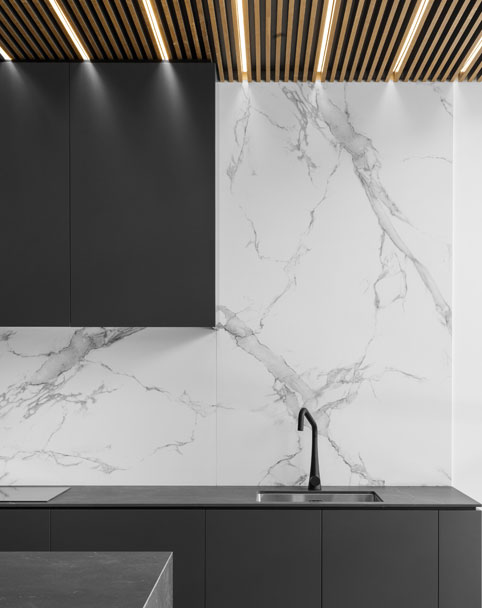Selecting the perfect materials for your kitchen cabinetry is crucial in creating a functional and visually appealing kitchen. Kitchen cabinets go beyond mere storage; they contribute significantly to your kitchen’s overall look and feel. Whether you want to enhance the aesthetics or increase storage capacity, striking a balance between style and functionality is essential.
When choosing materials for your kitchen cabinets, durability is vital. Because of daily use and wear and tear, you need materials that can withstand the test of time.
Here are some factors you need to consider when making decisions about cabinet materials:
- Styles and Trends: Understand the style you prefer and what works for your home. This knowledge will guide you in choosing the most appropriate cabinet style and material for your kitchen.
- Consider Colours and Tones: Harmonising your cabinet colours and tones with your existing home decor is vital for creating a cohesive look. The goal is to create a harmonious blend that complements the overall design of your space.
- Explore Material Options: Today’s cabinetry offers three primary material options: pre-finished, post-finished, and solid timber. Each material has its unique characteristics and benefits. Speak with professionals in the industry to see which works best for you.
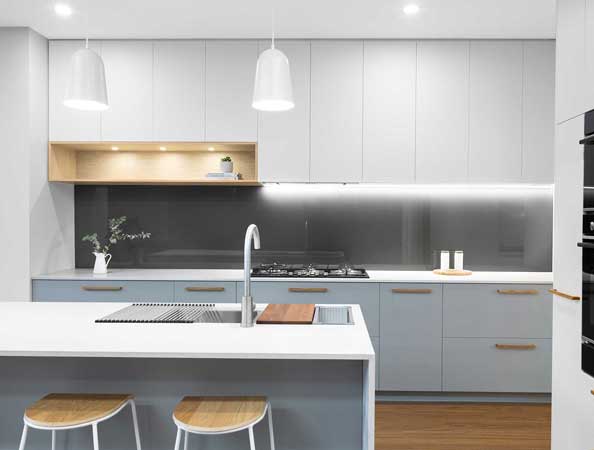
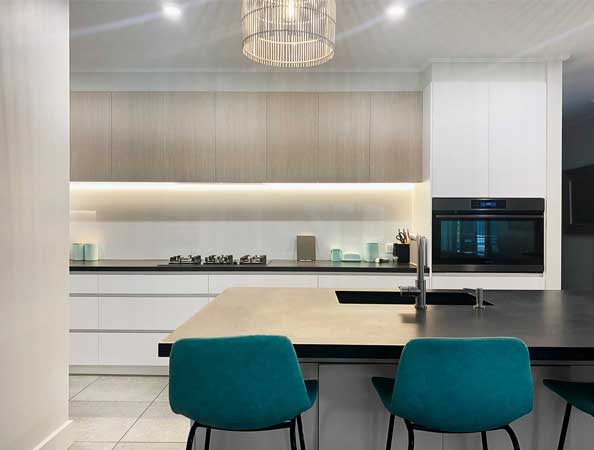
Pre-finished Material
Pre-finished materials include options like melamine, acrylics, and pre-finished veneer. These materials have surfaced already attached to the substrate before arriving at our factory. Once here, the boards are precisely cut to size and skilfully edged using an edge bander. It’s worth noting that the quality of the finished product can vary based on the fabricators’ choice of edge bander and glue type.
They are relatively durable and resilient, making them an excellent choice for Modern Luxe, Industrial, and Minimalist kitchen designs. These materials come in various finishes, such as matte, semi-gloss, and high gloss, offering options to fit your taste. An extensive selection of solid colours, woodgrain patterns, and metallic shades are also available.
Post-finished Material
2-pac (acrylic paint) and vinyl are post-finished materials, as the doors are cut into desired shapes, patterns, and sizes before the final finish is applied. To ensure an even application of 2-pac and vinyl, the substrate used is typically Raw MDF or Paint Grade Satin MDF.
One notable characteristic of post-finished materials is that they don’t require additional edging and can incorporate routed patterns. While vinyl offers a limited colour range, it can be finished with woodgrain door patterns. On the other hand, 2-pac boasts a wide array of colours, as it can be customised to any paint colour. Moreover, customers can choose from different finishes, such as high gloss, semi-gloss, and satin (which have a near-matte appearance).
Durability can vary significantly between 2-pac and vinyl. Vinyl is highly resilient and can withstand heavy use, but over time, it may start to peel, particularly in areas exposed to heat, such as around the oven or above the cooktop. Conversely, 2-pac can be prone to chipping, similar to the acrylic paint used on cars.
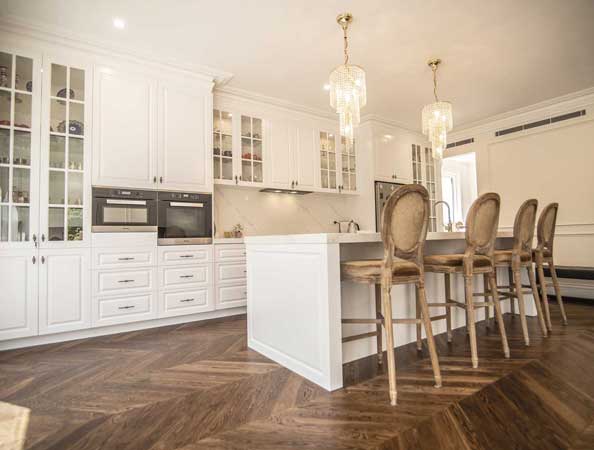
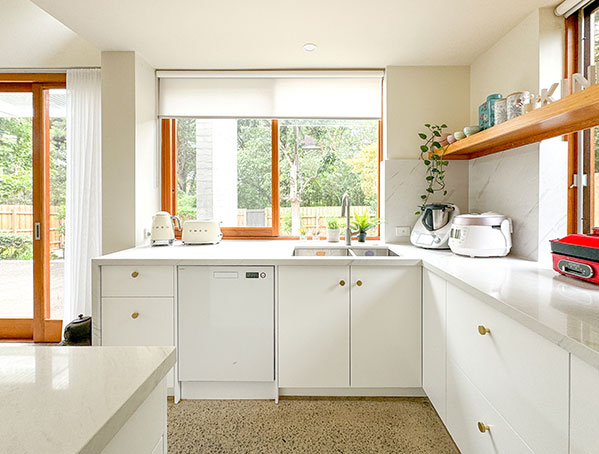
Solid Timber And Other Materials
Solid timber has long been regarded as one of the most durable options. In the past, it was widely used for kitchen cabinets. However, due to cost considerations and the availability of alternative materials, solid timber is now less frequently used in joinery. Nonetheless, there has been a recent resurgence in using solid timber features, such as solid timber benchtops, which add a touch of elegance to modern kitchens.
Another popular material is plywood, which consists of laminated wood pieces glued together and coated with a hardwood veneer. The grade of plywood determines its durability and strength, with grades AA and A being more expensive while others are relatively cheaper. Regardless of the grade chosen, a skilled cabinetmaker can effectively work with any grade, maximising its advantages in your cabinetry.
Compact laminate is yet another material worth considering. It is crafted by layering recycled paper fibres dipped in resin and dried. These layers are then sandwiched between laminates before compression under high pressure and heat. This manufacturing process results in a remarkably sturdy and dense structure. Moreover, the ability to vary the thickness of the laminate adds versatility to its application. Compact laminate is often favoured for outdoor use due to its relatively waterproof nature.
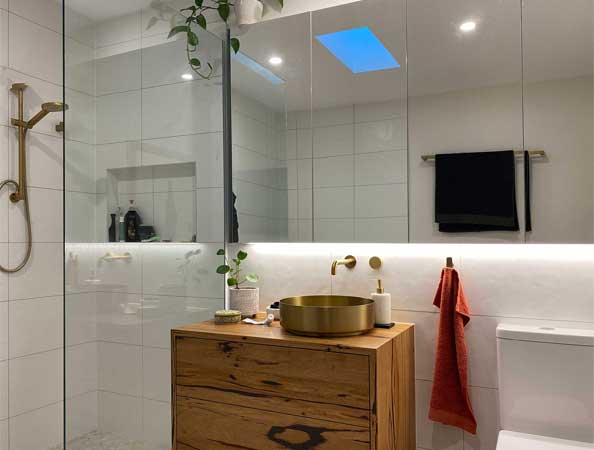
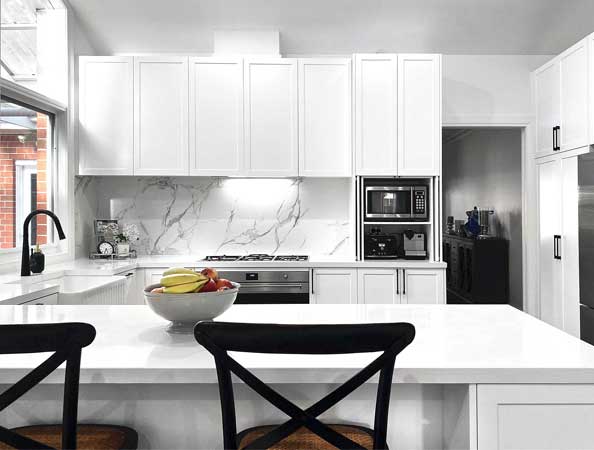
What Is A Substrate?
Substrates serve as the foundational materials for all types of cabinetry except for solid timber. Regardless of the final finish, a substrate will always be beneath the surface material. Typical substrate thicknesses range from 12mm to 32mm, with 16mm and 18mm being the most common for joinery doors and panels.
The two main types of substrates are particleboard and MDF (Medium Density Fiber) board, each with its characteristics. Here’s a breakdown of the key differences between the two:
Understanding these differences in substrates can help you make an informed decision when choosing materials for your cabinetry. Consider factors such as durability, appearance, moisture resistance, and budget to find the substrate that best suits your needs. Whether you opt for MDF or particleboard, both can be reliable foundations for your kitchen cabinets.
Choose KIND Kitchens for Your Modern Kitchen Cabinets
When it comes to kitchen cabinets, KIND Kitchens is your ultimate choice. We excel in customising cabinets to match your tastes, preferences, and needs. Our expertise lies in optimising storage even in compact spaces and offering the finest designs, ensuring aesthetic appeal.
With us, you’ll find everything you need under one roof. Whether it’s a small or large project, we guarantee top-notch quality and help you maximise your kitchen’s potential with our superior kitchen cabinets so that you get to enjoy your kind of kitchen. Contact us today to discover how we can transform your home with our renovations or cabinetry services. Visit our showrooms at Bentleigh, Blackburn, Chadstone, and Hawthorn.
When it comes to kitchen cabinets, KIND Kitchens is your ultimate choice. We excel in customising cabinets to match your tastes, preferences, and needs. Our expertise lies in optimising storage even in compact spaces and offering the finest designs, ensuring aesthetic appeal.
With us, you’ll find everything you need under one roof. Whether it’s a small or large project, we guarantee top-notch quality and help you maximise your kitchen’s potential with our superior kitchen cabinets so that you get to enjoy your kind of kitchen. Contact us today to discover how we can transform your home with our renovations or cabinetry services. Visit our showrooms at Bentleigh, Blackburn, Chadstone, and Hawthorn.
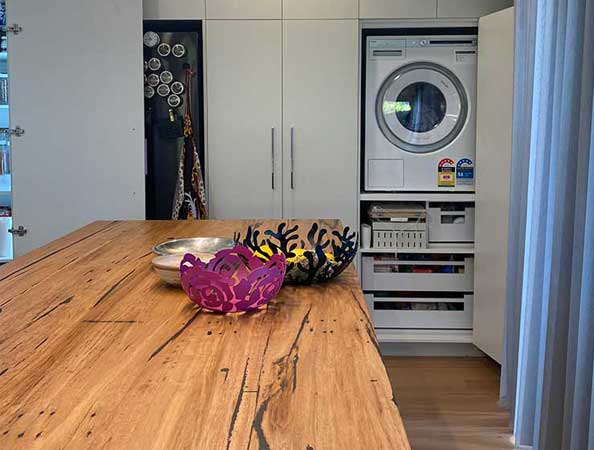
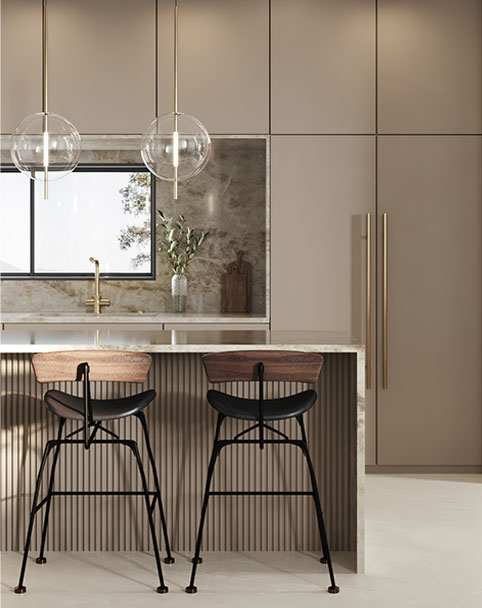
KITCHEN & PANTRY
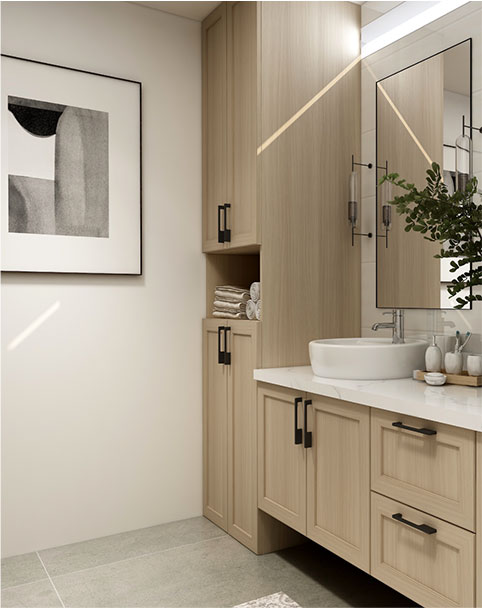
LAUNDRY & VANITY
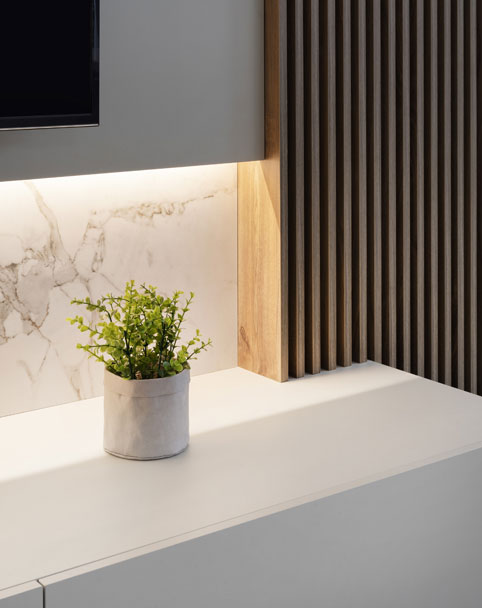
STUDY & ENTERTAINMENT
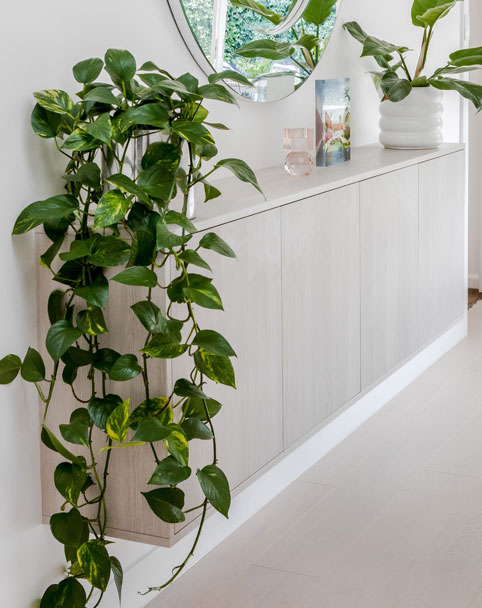
STORAGE SOLUTIONS
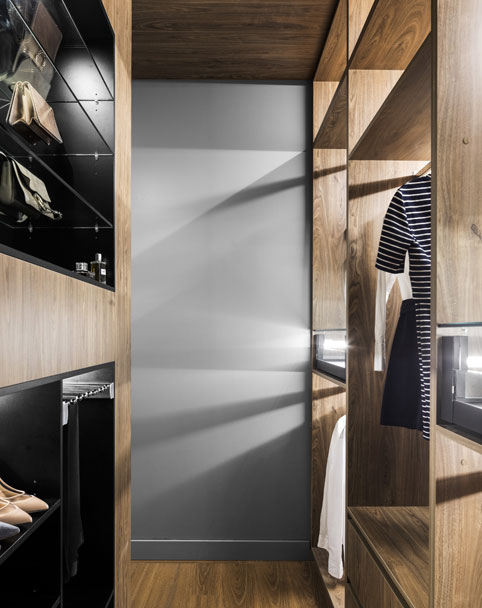
WARDROBE & DISPLAY
